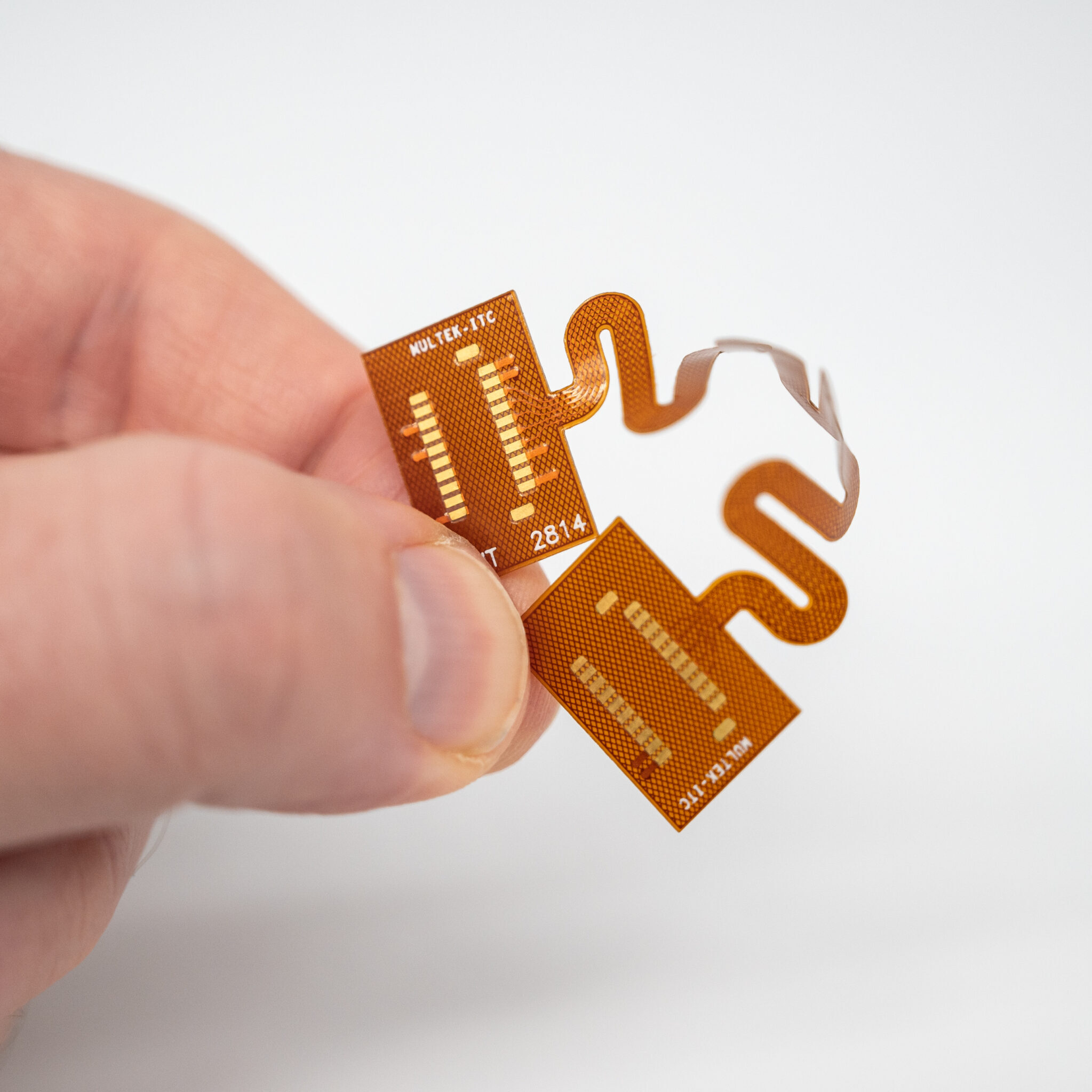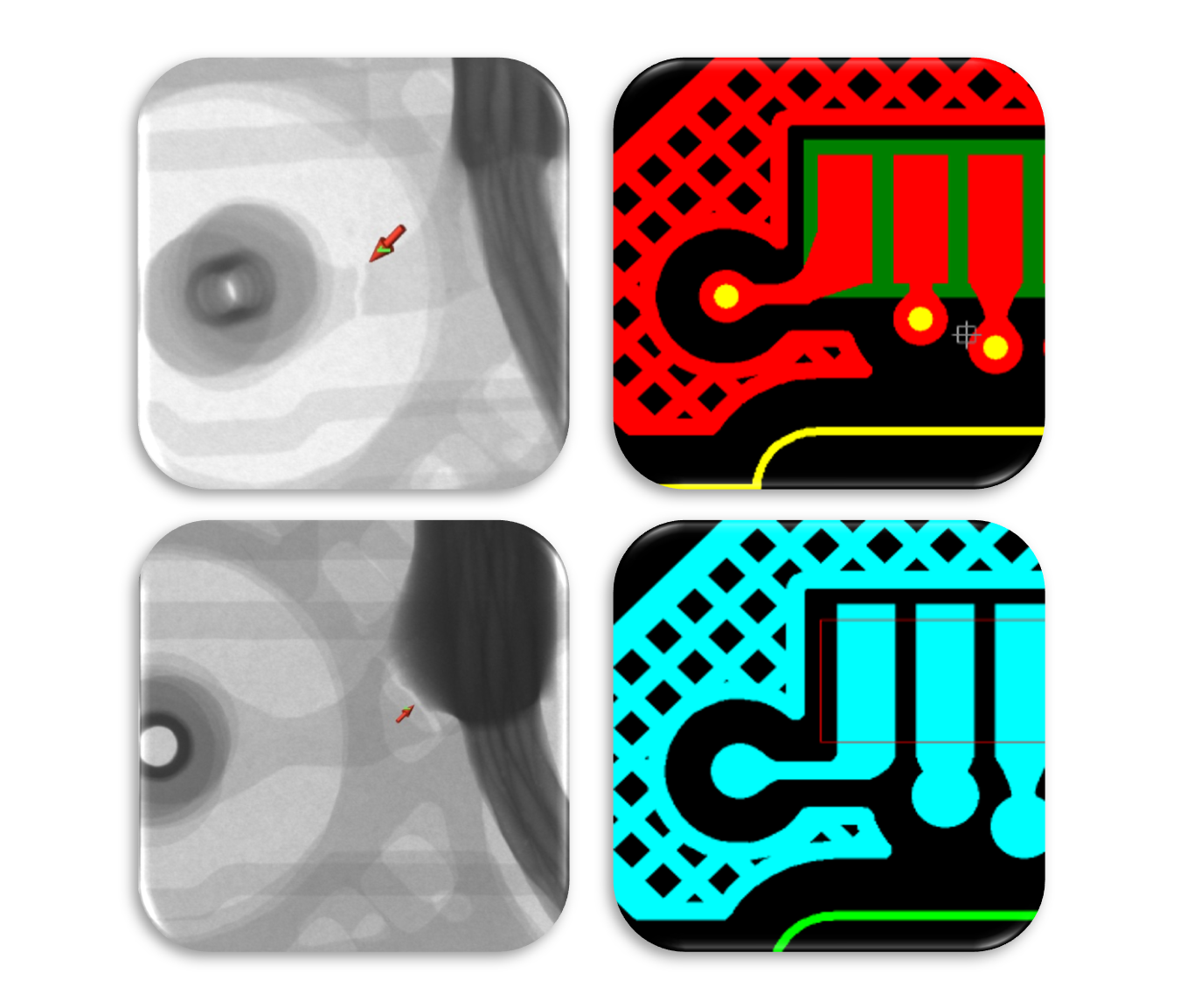DFM software is a valuable tool that helps identify and address potential manufacturing issues early in the design process. However, it’s important to remember that just because your flex circuit design passes Design for Manufacturability (DFM) review doesn’t guarantee it will function flawlessly in your final application.
What DFM Software Misses:
Traditional DFM can only check if a design layout meets the minimum manufacturing capabilities, and if the stackup meets the electrical and mechanical requirements. Reliability of flexible circuit designs depends not only on DFM, but also has to consider potential stress risers to make sure there is no failure during installation or use. Here are couple of examples of stress risers that are overlooked during traditional DFM process.
- Material suitability: The chosen material might not withstand the required number of bend cycles. DFM software can’t predict material fatigue.
- Shielding Adequacy:
 Your design might lack sufficient shielding for the environment, a detail beyond DFM software’s scope.
Your design might lack sufficient shielding for the environment, a detail beyond DFM software’s scope. - Bending considerations: Trace staggering, crucial for proper bending, isn’t something DFM software can analyze.
- Neutral axis placement: DFM software can’t minimize trace distance to the neutral axis for tight bends and requires manual inspection.
- I-Beam Traces: While you can manufacture traces directly on top of one another from one layer to the next, these will increase strain within a flexible circuit and can lead to failure.
- Geometry within final assembly: Each of your components is made within a certain tolerance. Just because each component meets its specifications doesn’t mean they’ll all assemble perfectly. DFM analysis needs to consider how all the pieces fit together to avoid assembly challenges.
- Evolving manufacturing techniques: The field of manufacturing is constantly evolving. DFM software may not be up-to-date on the latest manufacturing techniques, which could lead to missed opportunities for optimization.
- Custom requirements: DFM software works best with standardized designs. Highly customized products may not be well-suited for DFM analysis.
- Considering the bigger picture: DFM software focuses on the manufacturability of a single product. It may not take into account factors such as the overall production line or the availability of resources.
- Delamination can occur during assembly: The heat from a reflow oven, which is hotter than the end application, can separate laminated layers on a flexible circuit.
Our Comprehensive DFM Service:
We go beyond basic DFM checks to ensure your flex circuit thrives in your application:
- Application Understanding: How will the circuit be used? We capture details about your application’s environment, temperature, and use case to tailor the design.
- Manual Reviews: Our engineers assess trace staggering, bend radius, and neutral axis placement for optimal flexibility and long-term performance.
- Material Expertise: We look at your projects intended use and lifecycle in order to recommend materials that meet your specific project requirements.
- Stack-Up Optimization: We review and refine the layer stack-up for optimal performance.
Case Study: Portable Wireless ECG Device
While conducting DFM on a medical device, a portable wireless ECG measurement tool, the unit would malfunction after a limited number of uses. Failure analysis revealed fracturing in the circuit traces (shown in black and white images). While the design and stackup passed standard DFM checks, the stress point wasn’t readily apparent because it involved the flexible housing. The original trace (shown in red) entered the coverlay opening at an angle, creating a stress riser. The corrected routing (shown in blue) eliminates this issue and prevents trace fractures.
This example highlights the importance of considering stress risers during DFM for flexible circuits. Traditional DFM methods might overlook these critical factors, potentially leading to product failure. By incorporating stress riser analysis into the DFM process, we can ensure the design’s integrity and create more reliable flexible circuits.
Who Needs This Improved DFM Service?
- First-time Flex Circuit Designers: We provide valuable feedback to ensure your design is successful.
- Engineers trying something new: If this is your first time working with a specific feature or material type, we can help you optimize your design and reduce your total prototyping iterations.
- Anyone with Flex Circuit Concerns: If you have questions about your design’s functionality, our DFM service provides peace of mind.
Remember: DFM is just one step. Partner with us for a comprehensive approach that guarantees your flex circuit designs excel in your application. Contact us information and location | Flex Interconnect (fit4flex.com)


